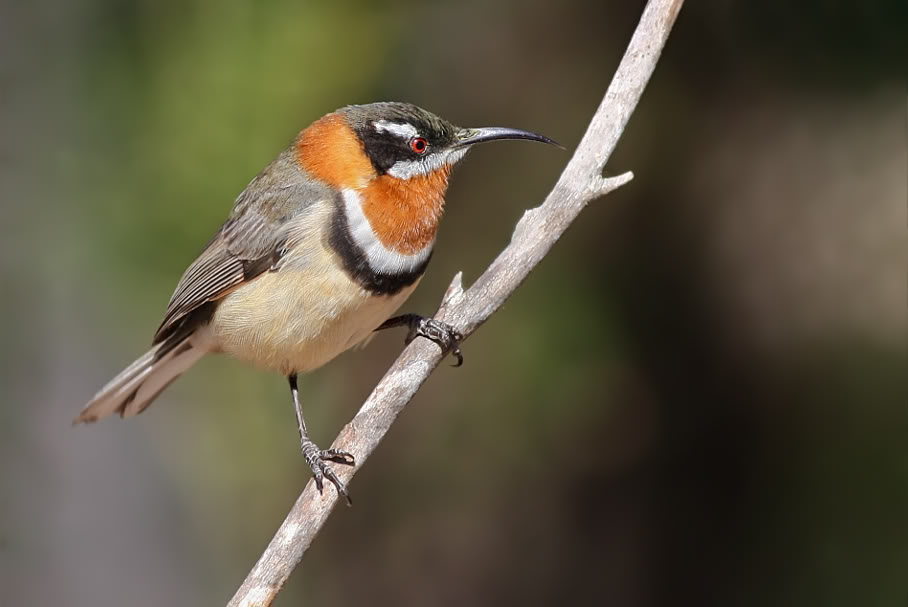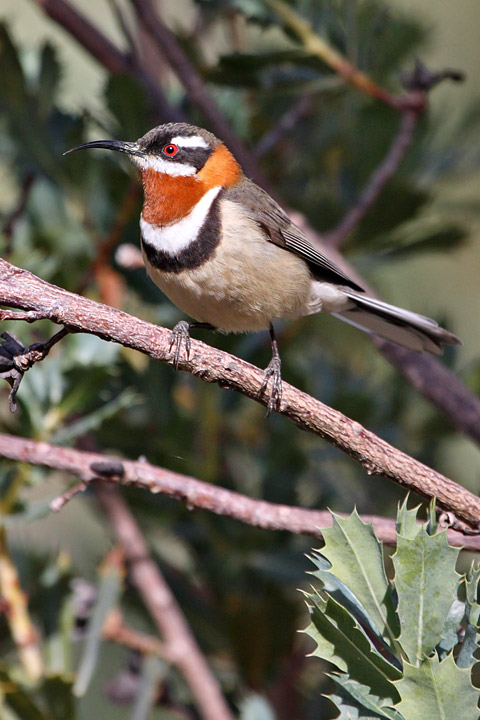
Acanthorhynchus superciliosus
TAXONOMY
Acanthorhynchus superciliosus Gould, 1837, Perth, Western Australia.
OTHER COMMON NAMES
English: Western spinebilled honeyeater; French: Mйliphage
festonnй; German: Buntkopf-Honigfresser; Spanish: Pico de
Espina Occidental.
PHYSICAL CHARACTERISTICS
5.5 in (14 cm); 0.35 oz (10 g). Head black, back and wings
grayish. Rufous band behind neck, and from throat to breast.
Underparts light gray with black and white bands below breast.
White bands behind bill and eye.
DISTRIBUTION
Southwestern Australia.
HABITAT
Heathland, woodland, and open forest with heathy understory.
Sometimes in mallee, rarely in gardens.
BEHAVIOR
Active. White outer tail feathers conspicuous in flight. Produce
audible wing beats. Exhibit flight displays, frequent rapid and
erratic chases, and male displays to female by fanning tail.
Emit twittering and whistling calls and song. Poorly understood
movements, perhaps local and in response to flowering
patterns of plants.
FEEDING ECOLOGY AND DIET
Probe flowers of banksias, eucalyptus, and numerous shrubs,
including Dryandra, Grevillea, Adenanthos, and Calothamnus, as
well as kangaroo paws (Anigozanthos). Also take insects, mostly
captured in the air but also gleaned from plants.
REPRODUCTIVE BIOLOGY
Breed July to December, occasionally later. The rounded cupshaped
nest is placed in a shrub or small tree. Female mostly
incubates the clutch of one or two eggs, but both parents feed
young. Incubation and fledging periods not known.
CONSERVATION STATUS
Not threatened, but has declined in northeastern part of range
due to extensive clearing of habitat; also adversely affected by fire.
SIGNIFICANCE TO HUMANS
None known.
Photo Gallery of - Western spinebill




 Animalia Life
Animalia Life